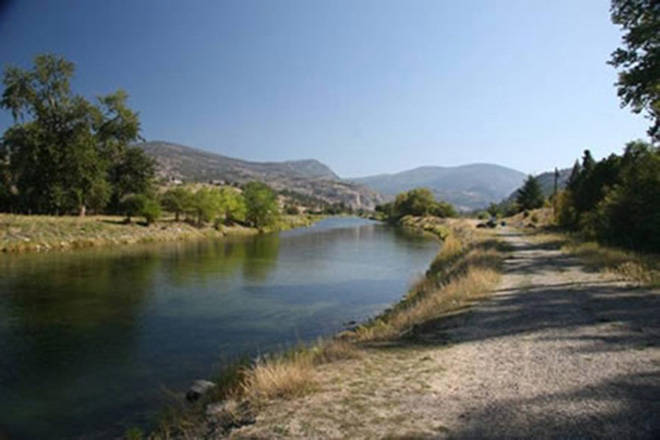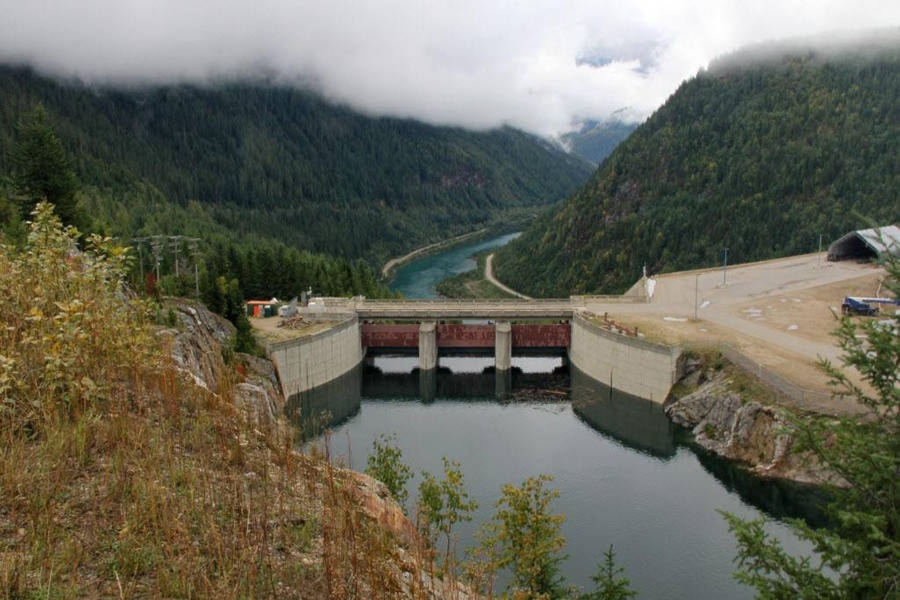The renegotiation of the Columbia River Treaty will have an impact on the B.C. Southern Interior���߲��о����s environment preservation and economic future that will also be felt across the Okanagan Valley.
With multiple interests converging on the treaty renegotiation process that just started preliminary meetings between U.S. and Canada representatives, it figures to be more complicated than the original agreement that was struck in 1964.
���߲��о����The original deal was about water, power and, in the U.S., access to irrigation supply for agriculture ���߲��о���� and that was it,���߲��о���� said Brian Guy, a retired Vernon geotechnical engineer and former chair of both the Okanagan Water Stewardship Council and Canadian Water Resources Association.
���߲��о����Nobody cared at that time about the social impacts, the cultural impacts or the environmental impacts. The engineers came in and did their thing and did not think about those impacts. It was about flood control, money and hydro power.
���߲��о����But we live in a new world today and society���߲��о����s values about the environment have changed.���߲��о����
Treaty history
The Columbia River Treaty was struck in 1964, an agreement between the U.S. and Canada on the development and operations of dams in the upper Columbia River basin for power and flood control benefits in both countries.
Four dams in B.C. were constructed under the treaty���߲��о����Duncan Dam, Mica Dam and Keenleyside Dam���߲��о����and one in Montana���߲��о����Libby Dam.
Related: Negotiations to begin with Trump administration
| The Columbia River Basin encompasses B.C., Washington and Oregon. |
The original treaty came in the aftermath of spring runoff flooding that killed more than 30 people and destroyed the community of Vanport, Oregon, in 1948, causing economic losses that exceeded $100 million.
While the dams have provided significant economic benefits to the Pacific Northwest on both sides of the border through hydropower generation and flood control, the social and economic impacts to the regions impacted have become points of debate.
The deal has played a factor in the loss of the Columbia River salmon run, once one of the largest in North America, and flooded out some rural communities and prime valley bottom agriculture land in the Kootenays. But with regards to salmon, more damaging thanthe treaty has been construction of the Grand Coulee Dam in the U.S., built in 1942 and not part of the CRT, which blocked salmon spawning access in Canada on the main stem of the Columbia and its tributaries above that.
Several dams on the main stem of the mid/lower Columbia in the U.S., again constructed well before the CRT was signed, present inadequate fish passage issues
Related: U.S. has been ripping us off on water
Guy chaired a workshop on the past, present and future issues facing the Columbia River Treaty in Osoyoos in 2015, and says the issues raised at that forum remain applicable today.
Okanagan basin impact
He said from an Okanagan perspective, the impact of the treaty is felt in two distinct ways.
One involves the Okanagan River. It is a tributary that flows into the Columbia River basin, but no financial benefits for wildlife or environment mitigation initiatives, about $5-$8 million a year under the treaty, are directed to the Okanagan.
| Okanagan River flows into the Columbia River basin south of the U.S.-Canada border. Photo: Contributed |
A second unintended consequence of the original treaty, Guy said, is Washington���߲��о����s agriculture industry gained greater flexibility of access to reservoir storage water as a source of irrigation to create crops that in turn compete with B.C., such as the wine industry.
Moving forward, Guy said there are several contentious treaty renegotiation issues that remain a concern from a Canadian perspective.
One is the impact of the Indigenous Nations on any final agreement, given that Canadian courts recognize the need for First Nations to be consulted and sign off on resource development affecting their lands.
Related: First Nations excluded from treaty talks
The federal government recently announced a decision to exclude the Okanagan Nation Alliance, the Shuswap Nation Council and Ktunaxa Nation Council from the treaty renegotiation talks, despite the federal government���߲��о����s previous public commitment to include and consult Indigenous nations in the process.
���߲��о����The law, in that regard, has been clarified in our courts over the years, which is something that now really affects us in Canada,���߲��о���� he said.
Being excluded from the negotiating table, he added, only adds uncertainty to any treaty talk agreements moving forward.
| The Hugh Keenleyside Dam near Castlegar was one of three built as part of the Columbia River Treaty. It has had a huge impact on the Columbia River valley. Photo: House of Commons |
���߲��о����Similar arrangements exists for other rivers basins such as the Mackenzie River between B.C., Alberta and Northwest Territories, the Mekong River in Southeast Asia. That would take the Columbia River Treaty beyond just a commercial deal but cover the environmental impact and management of the whole basin,���߲��о���� he said.
Canadian negotiators, he said, may also not be on equal footing with their American counterparts on water management aspects of the deal. ���߲��о����More has been done on the American side with regards to water research and monitoring of conditions to develop a science base of information. We don���߲��о����t have have the same knowledge to better understand the positive and negative impacts of the existing treaty,���߲��о���� he said.
���߲��о����Many people have expressed concern we are on an unequal playing field.���߲��о����
On the question of scientific research on this side of the border, B.C. cabinet minister Katrine Conroy argues federal, provincial and First Nations government scientists and technical specialists have collaborated on studies, research and modelling to develop data, information and scenarios to mitigate treaty impacts and improve environmental conditions.
Climate change, Guy said, also has a role to play for the impact it will have on Columbia River flows in the future. ���߲��о����Any future agreement will have to be resilient and flexible enough to accommodate changes in the river that occur. That has happened already and will occur in the future.���߲��о����
Guy also questioned the strategy of treaty talks potentially being used as leverage in solving other disputes such as softwood lumber, pipelines, trade tariffs or NAFTA because there is no current time factor to renegotiate the treaty.
���߲��о����There is no urgency to reach an agreement on the treaty. And 2024 is long after the current issues, such as the softwood lumber dispute or NAFTA, will have long been resolved.
���߲��о����There is a huge risk to playing off different deals against each other as a negotiating tactic.���߲��о����
Speaking up for ecosystem enhancement
A Columbia River Treaty workshop hosted by UBC Okanagan this week discussed the prospects of adding ecological concerns to the treaty renegotiation process.
John Wagner, a UBCO associate professor of anthropology who chaired the forum, said commitment to environmental concerns from either side is difficult to predict.
| The town of Arrowhead, as it existed in 1910, vanished beneath the waters of Upper Arrow Lake Reservoir by 1968 after the Hugh Keenlyside Dam was built. Photo: Contributed |
���߲��о����The language is there but there is some skepticism about the will of governments on either side to pursue that aspect,���߲��о���� Wagner said.
He said while the U.S. is raising environmental issues, such as reviving salmon runs in the Columbia River system that were wiped out by the 1964 treaty, there is an argument that is merely a negotiating tactic to gain more access control to water rights in Canada not currently included in the treaty.
Wagner also voiced concerns that the treaty talks being leveraged to seek concessions on other issues such as softwood lumber exports and the North America Free Trade Agreement.
Wagner said B.C. Premier John Horgan has publicly embraced that negotiating tactic in the past.
���߲��о����I think we have to worry a little bit about a Columbia Treaty being traded for something else. Give Americans what they want on the treaty in order to get what we want on another issue,���߲��о���� he said.
���߲��о����We���߲��о����re not really sure where Canada stands on that point.���߲��о����
To report a typo, email: edit@kelownacapnews.com.
<>
barry.gerding@blackpress.ca
Like us on and follow us on .




